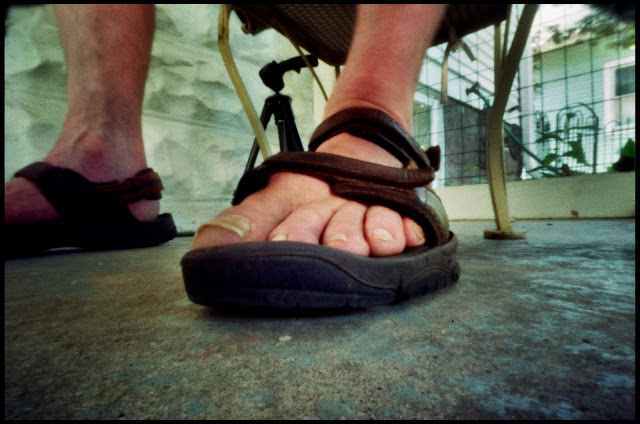U-Club is a campus social group which meets monthly during the school year for drinks, hors d'oeuvres, and general commiserating and conspiring.
I only take photographs there occasionally, because there's the perpetual pinhole problem of not much of a place to put a tabletop tripod (much less a regular tripod) where it won't get bumped by the milling crowd, and I have an odd reluctance to be noticed doing it.
Occasionally both objections are manageable, and I take a few exposures.
The most recent meeting, I was one of the earlier arrivals and got a seat on a couch with the only coffee table in the room right in front of me.
I sat down next to Grace, a former big city journalist who followed her mathematician spouse to the outlands. By sheer force of will, Grace developed a class which involves one big all-class project which my department would help stroke into print, web and video productions. The University loves her because she get's at least half a page in the local newspaper and a few minutes on the Green Bay TV news every time she puts one of these out. (
Grace would kill me if I didn't link to her latest project). Here's she's trying to corral Bill, a chemistry professor, into giving a presentation in one of her live happenings. I'm trying to figure out how to explain to Bill that his head has been replaced by the lamp shade behind him. I got it – it's symbolizing how bright scientists are. Yea, that's it. Bill is also heavily involved in the Faculty Senate so possibly it represents the transparency of University governance.
When I went into the other room I ran into Allison, the University's new photography teacher, whom I'd already met last fall. While we chatted about teaching photography and of course, me plugging pinhole, with the dining room table right in front of us, it seemed obvious to take a picture. I didn't get a chance to ask Alison about her own work so I googled her and she's doing
this fantastic project about "a place between reality and play", in which she appears in all the photographs. I can relate to self-portraiture. Allison has a really consistent conceptual framework and looks like very disciplined preparation. I do self-portraiture because it's convenient.

Standing next to us were Jennifer, chair of the Chemistry Department, and Mary Ann, a faculty spouse who shepherds foreign exchange students, looking quite saintly haloed by the wall sconce with the camera looking up at her. I wish I could say this was my idea, but it's often said that half the fun of pinhole photography is finding out what actually came through the pinhole. During the previous exposure, which took about 5 minutes, Mary Ann mentioned that she had never been photographed with a pinhole camera. It would be impolite to ignore a direct invitation like that. I warned her that sometimes odd things happen in pinhole portraiture. The overexposed light coming through the hair on the back of her head somewhat modified her coiffure and reinforced the notion that she was glowing. The overall composition of this picture was also a pleasant surprise, and brings out my latent didactic photo teacher. Please discuss leading lines, framing, the rule of thirds and a high contrast center of interest.

All with the Populist. .15mm pinhole 24mm from 24x36mm frame.






















